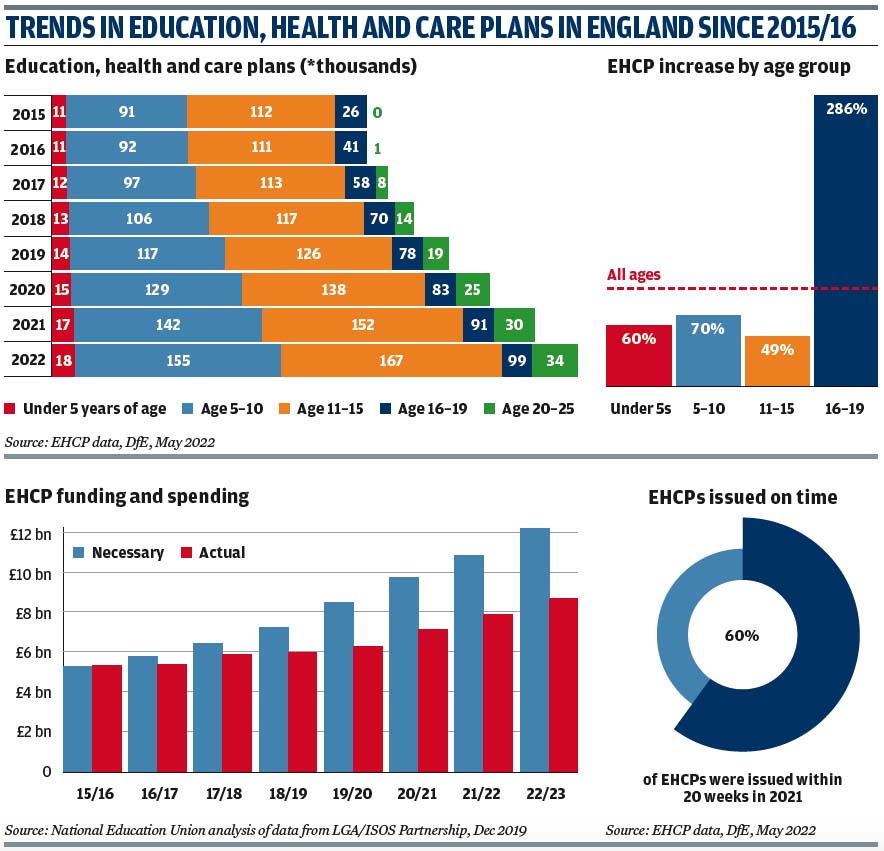
Eight years on from the 2014 reforms, heralded to ameliorate the inclusion of children with special educational needs and disabilities (SEND) in mainstream schools and reduce the number who required statutory assessment, the evidence would suggest otherwise. Department for Education figures, based on the January local authority census, shows the number of education, health and care plans (EHCPs) has increased by 9.9 per cent, the largest annual increase since the reforms were introduced.

There are several reasons for this. One is that parents and education settings have become much better at identifying needs, through increased continuing professional development and awareness. Early intervention, defined as providing support to children and young people at risk of poor outcomes at the earliest opportunity, can improve life chances and offer a more holistic and long-term transformation. Accessing specialist support is costly however and some local authorities lack the specialist services that schools are requiring.
Register Now to Continue Reading
Thank you for visiting Children & Young People Now and making use of our archive of more than 60,000 expert features, topics hubs, case studies and policy updates. Why not register today and enjoy the following great benefits:
What's Included
-
Free access to 4 subscriber-only articles per month
-
Email newsletter providing advice and guidance across the sector
Already have an account? Sign in here

